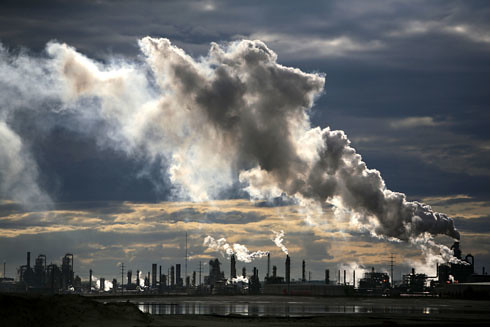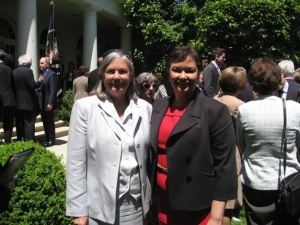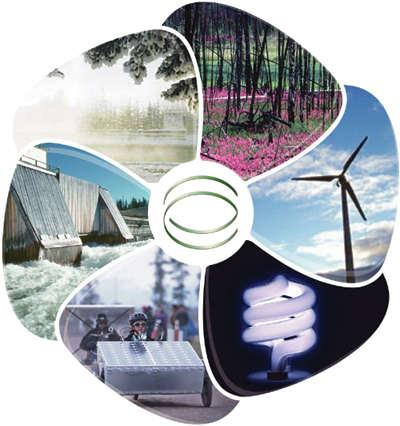The Globe 2010 Conference put on by the Globe Foundation dealt with a diversity of green topics but mostly it dealt with the topic of the Future of Energy. Green oil and the globe. Sort of has a “green eggs and ham” ring to it, doesn't it? Sounds paradoxical, properties you wouldn't normally put together – green oil/ green eggs...it sounds, well, it sounds downright Dr. Seussical.
But Green Oil, and, to the point, green energy is what a healthy showing of some of the world's biggest oil and energy companies came out to talk about and did so on stages in front of thousands of people.

- Alberta, Canada Tar Sands
It's tempting to state that because the conference took place on the home court of the Tar Sands Oil industry, the topic dominated the conversation. But it's more accurate to say that tar sands simply dominate the conversation at present because of the enormity of the reserves, mostly in Canada, and because the infrastructure for distribution is already in place.
Some Facts before we continue:
- Oil sands in Canada are 2nd only to Saudi Arabia in terms of reserves.
- Oil sands will be the primary energy resources for the next century.
- Half of the freely traded energy reserves is in the oil sands.
Canada sits on an unrivalled energy resource base in the politically, economically free world. The following are excerpts from presentations and a discussion given by some of the corporate stakeholders' CEO's:
“An energy strategy can be a climate change strategy,” said Steve Williams, COO, Suncor Energy Inc., based out of Calgary. He stated that Suncor has big investments in renewable energy, is, in fact, one of the biggest investors in renewable energy. “We're skating to where the puck is,” he said, quoting a famous hockey player.
Mobility is the issue. The discussion is not renewables, was the consensus. When we talk about renewables really what we are talking about is how to move people, smarter, better, more efficiently.
To that point, in a related panel, Bill Smith S.V.P. Energy Sector, Siemens Canada pointed out that we are talking about the “electrification of personal transportation” and its supporting infrastructure. For example, he can see a day when people re-fuel at charging stations set up at Tim Horton's [Am. Transl. = Dunkin' Donuts].

- Natural Gas, A Transitional Fuel
Natural Gas is another big dog when it comes to any present day practical discussions about transitioning from a fossil fuel economy to one based on renewables. Greg Ebel, President and CEO, Spectra Energy, drove home the point that there has been considerable transformational changes in natural gas on all fronts even just in the past two years. “We met two years ago but with all the changes in natural gas, it could have been two decades ago.” He explained that with the technology we have today to go after the natural gas reserves, as opposed to just two years ago, we now have increased our N. American gas supplies by 58%. Those supplies can last N. America a good two centuries longer, he said.
“What was grand and impossible 18 months ago is now commonplace. Technology doubles every 18 months.” - Greg Ebel.
He also pointed out that a greater use of natural gas appliances will represent a huge energy efficiency. For example, 65 million homes heated by Natural Gas today equals 35 million homes heated by coal in 1970.
And insofar as policy makers go regarding fuel efficiency and renewables, “If you're using a policy playbook 12-36 months out of date then you can't take advantage of a changing opportunity.” - Ebel
Steve Snyder, President and CEO of TransAlta Corporation, Calgary, put it simply: “It is the technology, stupid,” he said, to no one in particular and everyone at once.

- Based in Calgary, Alberta
His emphasis was that we are not in such the rush as we think we should be. “Oil, gas, electricity will still be here in 40 years. This is a 50 year issue, not a two year issue.”
An aspect of the fossil fuels/renewables/ GHG emissions conversation he hammered on was that we are identifying large problems and then jumping right in with micro-level solutions. “For example when we come up with proposed solutions to shut down the oil sands, everybody ride a bike, change a lightbulb and close the coal factories, these might be missing the mark.” To note, TransAlta was one of Canada's first companies to make a significant investment in wind energy.
Snyder is a big supporter of Smart Metering. One of the challenges renewable energy poses to consumers is its potential for sporadic delivery. The wind doesn't blow, the sun don't shine and you've got no light or heat, goes the average consumers' commonsensical thinking. And as consumers, we tolerate no room for error. We, at least in N. America, have come to expect power delivery 24/7. An expectation that California voters expressed only all too clearly a few years back in a special gubernatorial election.
The Smart Grid and Smart Metering looks like it will prove to be a technological solution to this challenge. Snyder suggested we accept the fact that a certain amount of government subsidies for renewables is necessary. He pointed out that the energy sector now [oil, yes] is subsidized and always has been. “Accept the science we have time,” he added.
Clarence Cazalot, Jr., President and CEO of Houston, Texas based Marathon Oil, said that reducing GHG emissions 17% by 2020 is “Tougher than putting a man on the moon.” He pointed out that the energy demand increase, primarily in the economically developing world, will be 40% between 2010 and 2030. “That's equivalent to adding two United States to the global energy demand.”
When asked what he thought about Natural Gas as a viable transitional fuel, he responded that Marathon Oil is in the business of Tar Sands Oil, not natural gas. Marathon Oil is heavily invested in Alberta's Tar Sands Oil industry. He also stated that, “We don't need elected officials picking winners or losers. Waxman-Markey Bill picked winners and losers.” That bill in the U.S. is also known as the Clean Energy and Security Act.
Read More Here >>>”We're going to look back in 30-40 years and see that this was a much easier problem to solve than we thought.” - Nicholas Parker, Executive Chairman, CleanTech Group, S.F., California.
Posted via web from The Green Blog Network






















